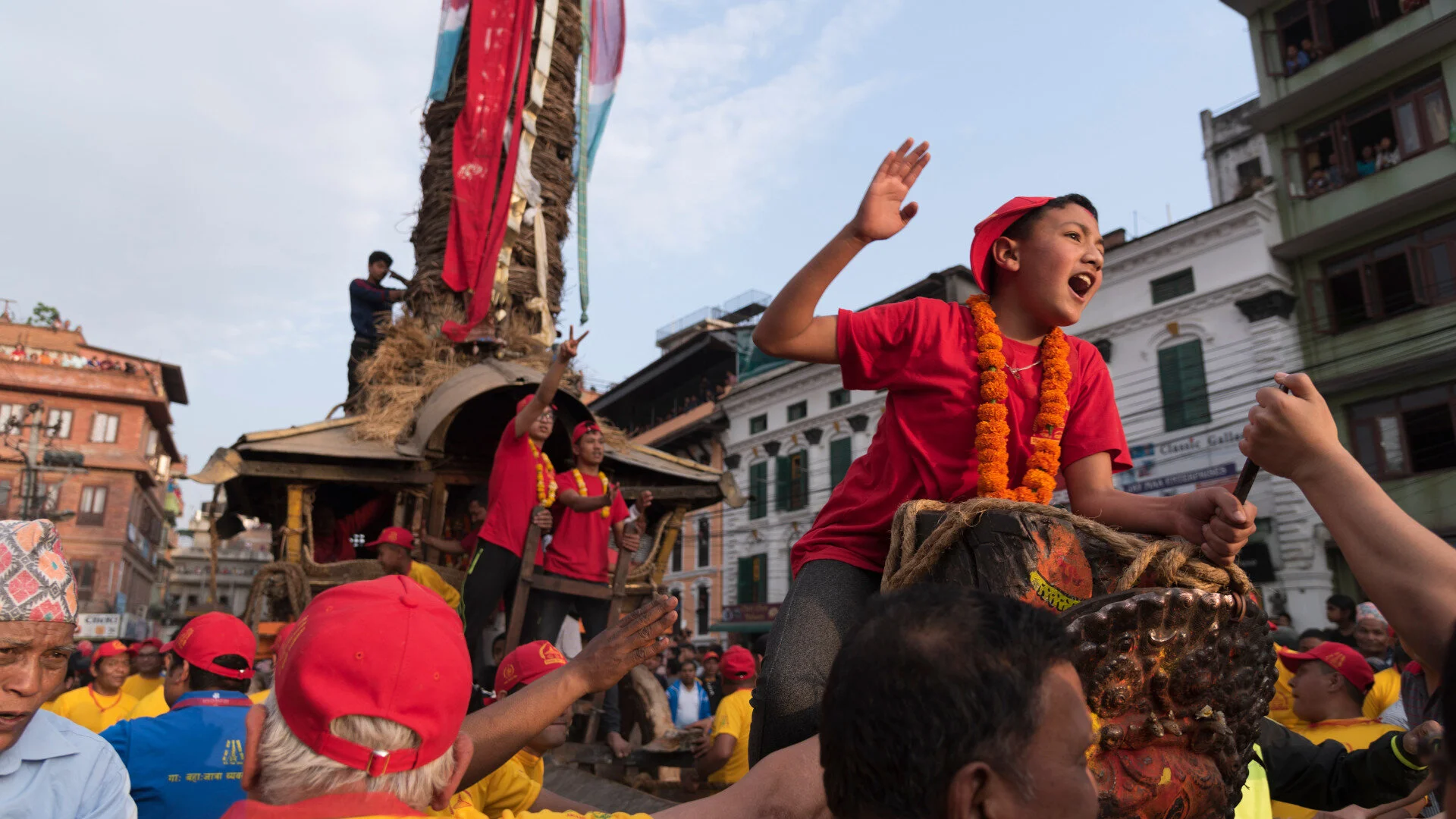Marked as the longest chariot festival in Nepal, Rato Matysendranath Jatra needs no introduction. The five-storey chariot has over time, become a symbol of cultural unity in the diverse scape of Kathmandu Valley. But little is known about the smaller chariot which leads and later follows Matysendranath also known as Karunamaya in Nepal Bhasa through the old routes of Lalitpur.
Seated in the smaller minaret styled chariot is an idol that over time has garnered many names. In the native dialect of Nepal Bhasa he is known as Chak: Baha Dyo (The god of Chak Baha in Patan of Lalitpur) and in Nepali as Jatadhari Lokeshwor ( Braided Hair Lokeshwor), but he is commonly called Min: Nath.
Tracing chronologies, research articles, oral tales and pieces of evidence; the worship and chariot festival of Chak: Baha Dyo dates back longer than of Rato Matysendranath. Before the formation of Lalitpur by King Bir Deva, the area featured multiple settlements such as Mati Rajya/ Matiligrama (Later Matilinagar), Yupagarma, Irshya Rajya and Dipavati. The city of Lalitpur was fashioned out of the merger of existing settlements and re-arrangement of principle locales and households.
“In this King’s time chariots were made for the following gods and the custom was established of having the people celebrate their festivals in the various localities of Lalitpattana from Baisakh Sukla 11 until the full moon: Matilinagar’s Minnath- Jatadhari Lokesvara, Dhalaksha;s Lokanath, Matilinagar’s Batuk Bhairav, Satha’s Naryana, Calalse’s Harisankar, Kolima’s [ Kulimha’s] Mahesvara..” - (Gellner, D. No. 1996. “ A sketch of the history of Lalitpur with special references to Buddhism.” CNAS Journal: 128
It was during the reign of his grandson King Bara Deva, Nepal Mandala (Kathmandu Valley) faced an acute famine. To relieve it King Narendra Deva ( father of King Bara Deva, who had left worldly affairs to live in a monastery in Bhadgeon), along with priest Bandhudatta and Rathacakra Jyapu left for Kamakhya in Assam to seek Karunamaya. The trio returned victoriously!
A chariot festival was instituted in honour of Karunamaya, which still makes its way through the inner routes of Lalitpur from the month of Baisakh. To anyone who has witnessed this festival cannot help but marvel at the joyous revelling, magnificent chariots, splendid tunes of Newa communities and the organized chaos of the festival, it is truly a sight to behold.
During the first day of the chariot festival, Karunamaya’s chariot is pulled some 400 metres and placed adjacent to Pucho: Thur ( Pulchowk Stupa). A special rite is conducted and revellers look on east-ward.
A smaller chariot pulled by children and young adults embarks from the heart of the city, to welcome Karunamaya. As Chak Baha Dyo’s chariot reaches a few hundred metres from Nya Tole ( Na: Tol), both idols face each other. According to oral traditions, being the elder god of Lalitpur without his permission, Karunamaya cannot enter the city. Thus, Chak Baha Dyo comes to the outskirts of Lalitpur to ceremonially welcome Karunamaya.
The chariot of Rato Matsyendranath is constructed at the outskirt of the city. The place is currently known as Pulchowk but was previously called Rath Khel, Rath meaning chariot and Khel an open field. Whereas the chariot of Chak Baha Dyo, since the inception of the festival is constructed right outside the bahal premises. Both chariots today, feature similar principles of construction but it is believed that before bringing Karunamaya into Nepal Mandala, the chariot of Chak Baha Dyo had a different design.
Major differences among the two chariots are their height and design of biman kha (the space where the idol is placed). Apart from which, both idols feature four wheels representing four Bhairavas, an elongated piece of wood known as Dhoma (God Wood), and pinnacle architecture topped by a circular base known as Byama.
Annually the chariot festival takes the same route. The chariot of Rato Matsyendranath makes its way from Rath Khel (Pulchowk) to Jhana Ko ( Near Pulchowk Stupa). Whereas the smaller chariot, leaves from Chak Baha ( locally known as Tangal) through Mangha (Mangal Bazar), Mah: Pal, Ga: Bahal and reaches Nya Tole ( Na Tole). After which, the smaller chariot makes a turn and proceeds towards Ga: Bahal and the other chariot follows.
During the second day of the chariot procession, the chariot of Chak Baha Dyo gives way to the chariot of Rato Matsyendranath to take the lead. Both chariots rest at the heart of the city, Mangha ( Mangal Bazar). In designated days, they are pulled towards Sundhara, Thapa Hiti, Laga Khel (Lagan Khel), Tha: Ti, It: i and on the final day the chariots are pulled to Ja Hwau Khel / Jawalakhel ( Ja meaning rice, Hwau; to feed in a throwing gesture and Khel an open field).















